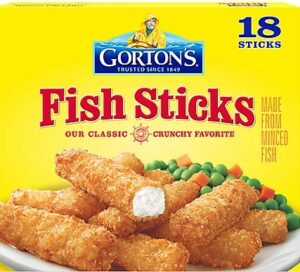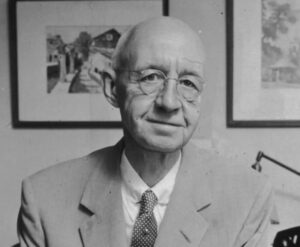By Sharon Oliver
Contributing Writer
GLOUCESTER – It is probably safe to say few people would have Italian dictator Benito Mussolini as the reason behind Gorton Seafood’s change in their business model on their bingo card. Yet, Mussolini’s decision to stiff the Gloucester seafood company out of $1 million for a shipment of salt cod in 1923 turned out to be a blessing in disguise.
By the time the Italian fascist had seized power in 1922, Gloucester was thriving as a major fishing port where fisherman caught, cured and sold cod. Gorton’s was the largest fishing company on the East Coast and looked forward to receiving the $1 million from the Italian government. However, in 1923, there was a decline in the demand for salt cod which had served as a staple for centuries. People started to prefer fresh fish. When the shipment arrived in Italy, Mussolini ordered it seized and refused to pay the company. Gorton’s found themselves facing bankruptcy.
Birdseye to the rescue
Being on the brink of financial ruin was heartbreaking for Slade Gorton, who had moved to Cape Ann from Rhode Island, helping his wife operate a boardinghouse by catching and curing fish for the boarders. What started out as an assist to his wife turned into the area’s largest and prosperous fishing business with 55 vessels and thousands of employees in 1906.
Help would come in 1924 by way of another pioneer in the food industry – Clarence Birdseye. That year, the eccentric inventor moved to Gloucester where he tinkered around with ways to freeze and package meat, vegetables, fruit and seafood. He had spent the previous five years trapping furs in Labrador, observing how the Eskimos preserved fish by placing them in barrels of brine where sub-zero temperatures quickly froze them. Birdseye mimicked the Eskimos’ method by using a bucket of brine, a cake of ice and an electric fan.
Looking for a rebound, Gorton sought Birdseye’s help in developing a way to freeze fish and theirs would be a match in frozen foods heaven. Five years later, the pair created a product that is served in millions of U.S. households to this day—frozen fish sticks in a family-size box with the Gorton logo on it and a fisherman in a yellow slicker and the slogan: Trust the Gorton’s fisherman.

A 1950s advertisement promoted the company’s virtues: “Easy to prepare, thrifty to serve, and delicious to eat, fish sticks, it can be truthfully said, have greatly increased the demand for fish, while revolutionizing the fishing industry.”
Revolution in food marketing
In 1926, while yachting off Gloucester and feasting on a flavorful goose that had been frozen for six months, Marjorie Merriweather Post inquired about her delicious dish and discovered that Clarence Birdseye had frozen it. She then told her father, who bought Clarence Birdseye’s business in 1929 for $22 million. The company, General Foods, retained Birdseye to do research and develop freezing techniques and placed the inventor’s name on its frozen products. Birdseye went on to invent a commercial freezer, and freezer cases for grocery stores.

Photo/Courtesy of Conagra Brands
In 1930, General Foods market-tested 27 frozen foods in 18 Springfield grocery stores and consumers could not get enough of them. Birdseye continued to innovate, experiment, and develop new inventions. He invented quick drying in 1946, improved the incandescent light bulb and founded an electric company that became part of Sylvania. Before his death in 1956, Clarence Birdseye had received 250 patents.
Benito Mussolini’s backstabbing refusal to pay for a shipment of cod that he ordered could have led to a major business failure for Slade Gorton. Instead, it forged a collaboration between Gorton and Clarence Birdseye which resulted in thousands of jobs and a frozen food empire for both men that continues to thrive a century later.
RELATED CONTENT:
How Earl Tupper turned one product into a household name












